The best microphone for vlogging and filmmaking
Ranging from lavalier to shotgun styles, you'll find the best microphone for vlogging and filmmaking right here
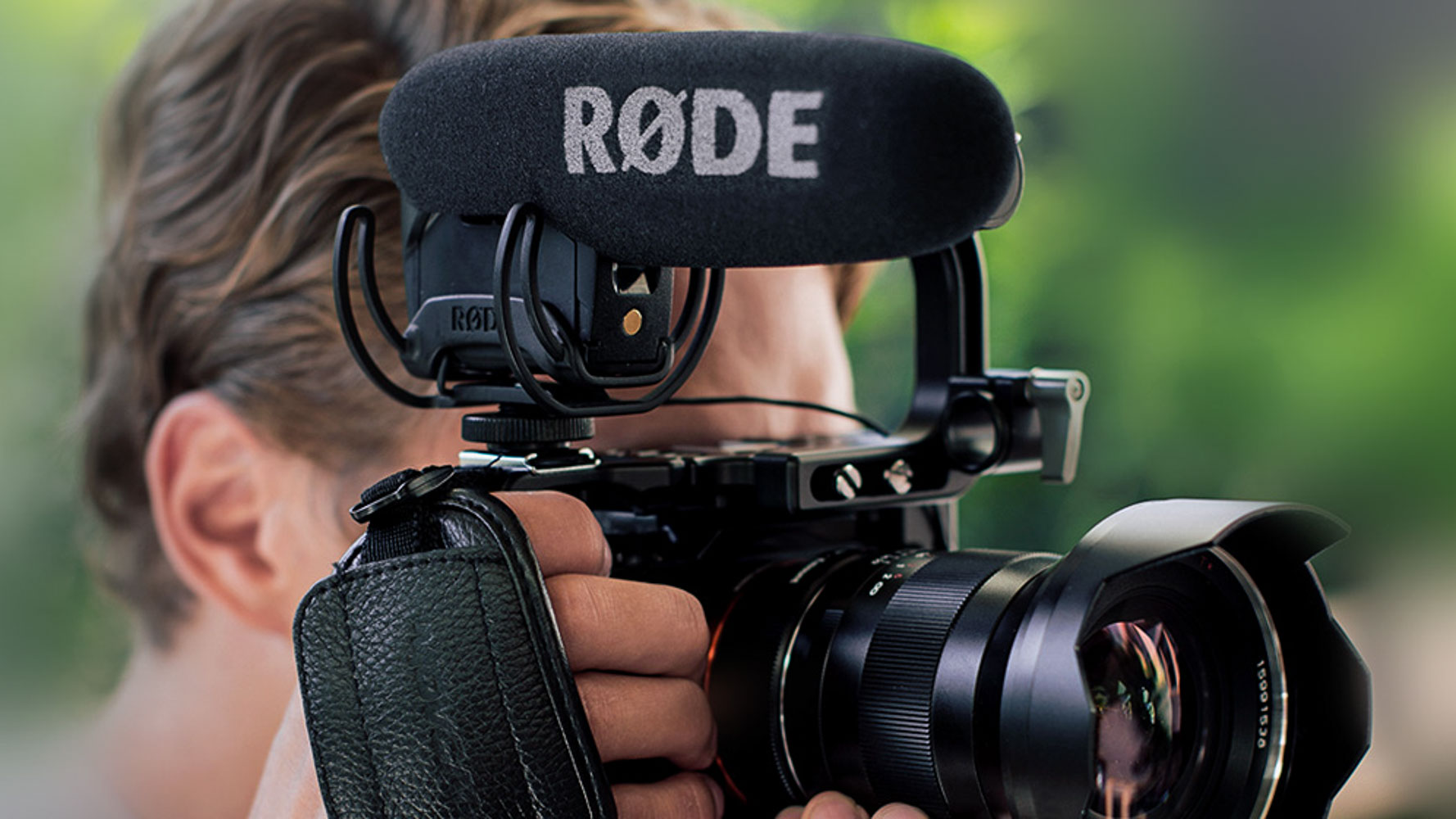
The best microphone for vlogging will instantly lift the quality of your audio compared with your camera's on-board mic. That's okay for home movies, of course, but if you want to stream to an audience, you'll need a decent mic that provides the level of quality they expect.
Nothing screams 'amateur' more than poor quality sound. So if you want to be taken seriously as a vlogger or filmmaking, you need a good mic. In this article, we gather together the top buys, covering a number of different styles.
A shotgun mic is a good all-purpose option – it mounts to the camera's hotshoe, and records whatever you point it at. If you're shooting interviews, a wireless or lavalier mic could be a good choice, as these can be clipped to a person's clothing to capture their voice cleanly. Wired lavalier mics are also available if you don't trust a wireless connection.
For recording group discussions like podcasts, a studio microphone is the best choice. These work in all directions, and tend to be easy to plug into a computer for simple setup. And if you're completely new to this and are already feeling overwhelmed with technical terms, don't worry – click to jump to our microphone jargon buster where we explain what all the key terms mean.
The best microphone for vlogging & filmmaking
Why you can trust Digital Camera World
Studio microphones
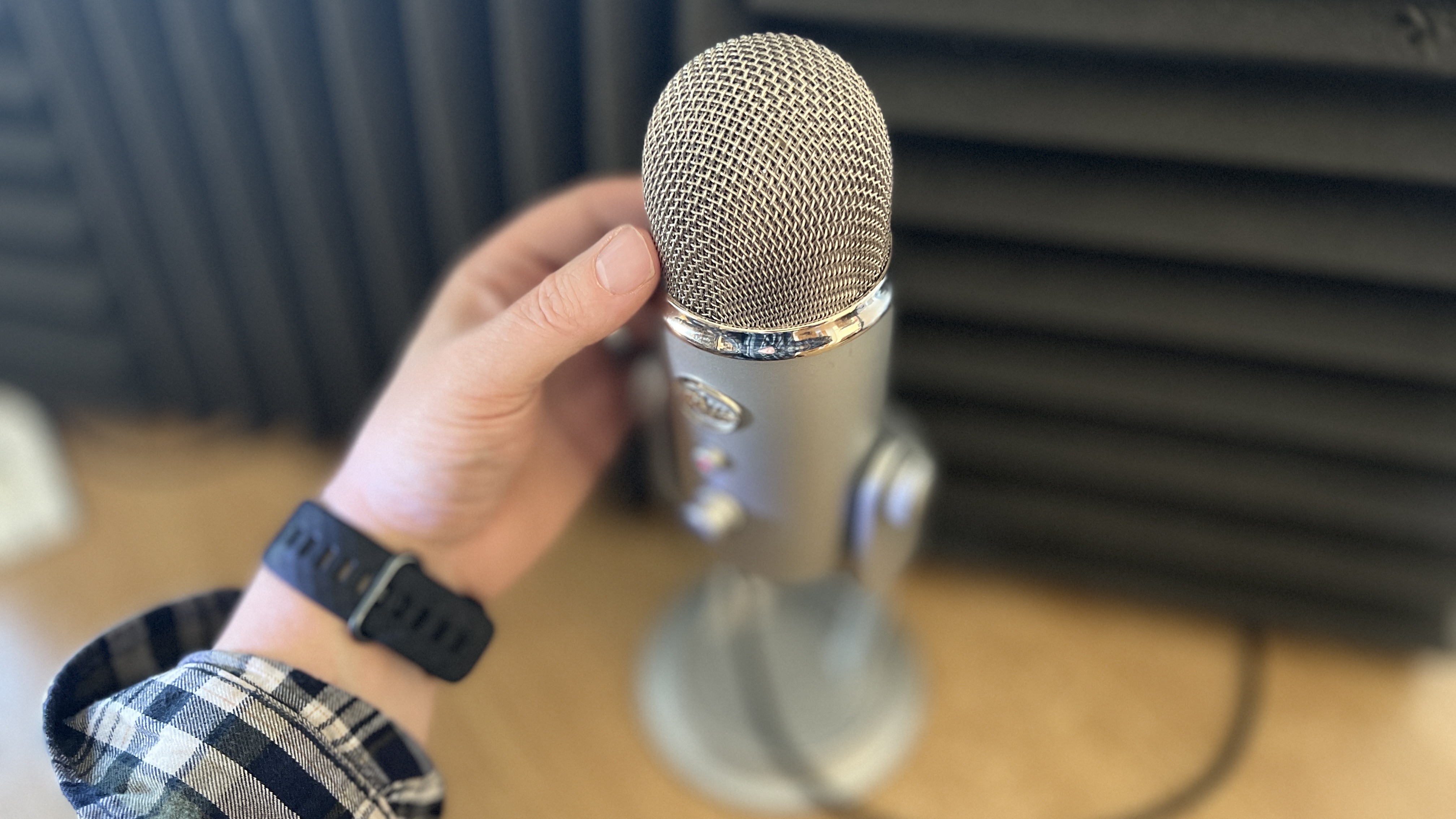

Specifications
Reasons to buy
Reasons to avoid
The Blue Yeti microphone has become a near-ubiquitous sight in podcast studios and on streaming desks. It’s a plug-and-play microphone that anyone can figure out how to use, and its sound quality is excellent too. So whether you just need to record yourself or are aiming to capture an entire group conversation, it's a great choice.
This mic uses a three-capsule system to power four recording patterns, allowing you to contour the audio capture around the specifics of your studio or setup. Its controls are well laid out and easily accessible, making it straightforward to adjust volume or quickly toggle the cough/mute button. Plus, the design is chic as hell.
The biggest compliment we can pay the Blue Yeti Studio microphone is this – it’s the mic the Digital Camera World team uses. For more details, see our Blue Yeti review.

Specifications
Reasons to buy
Reasons to avoid
This is a budget alternative to the similar but well-established Blue Yeti USB mic that’s already popular with podcasters and voice-over artists. It has fewer polar patterns than the Yeti but it will capture great sound if you’re podcasting via the front of the mic on the cardioid setting.
A detachable orange pop shield adds a splash of colour (if you need to show off the mic via YouTube) and it helps soften audio bangs caused by plosive consonants. A handy multi-function knob adjusts headphone volume or the strength of your input sound levels. Great value for money - see our full Joby Wavo POD review.
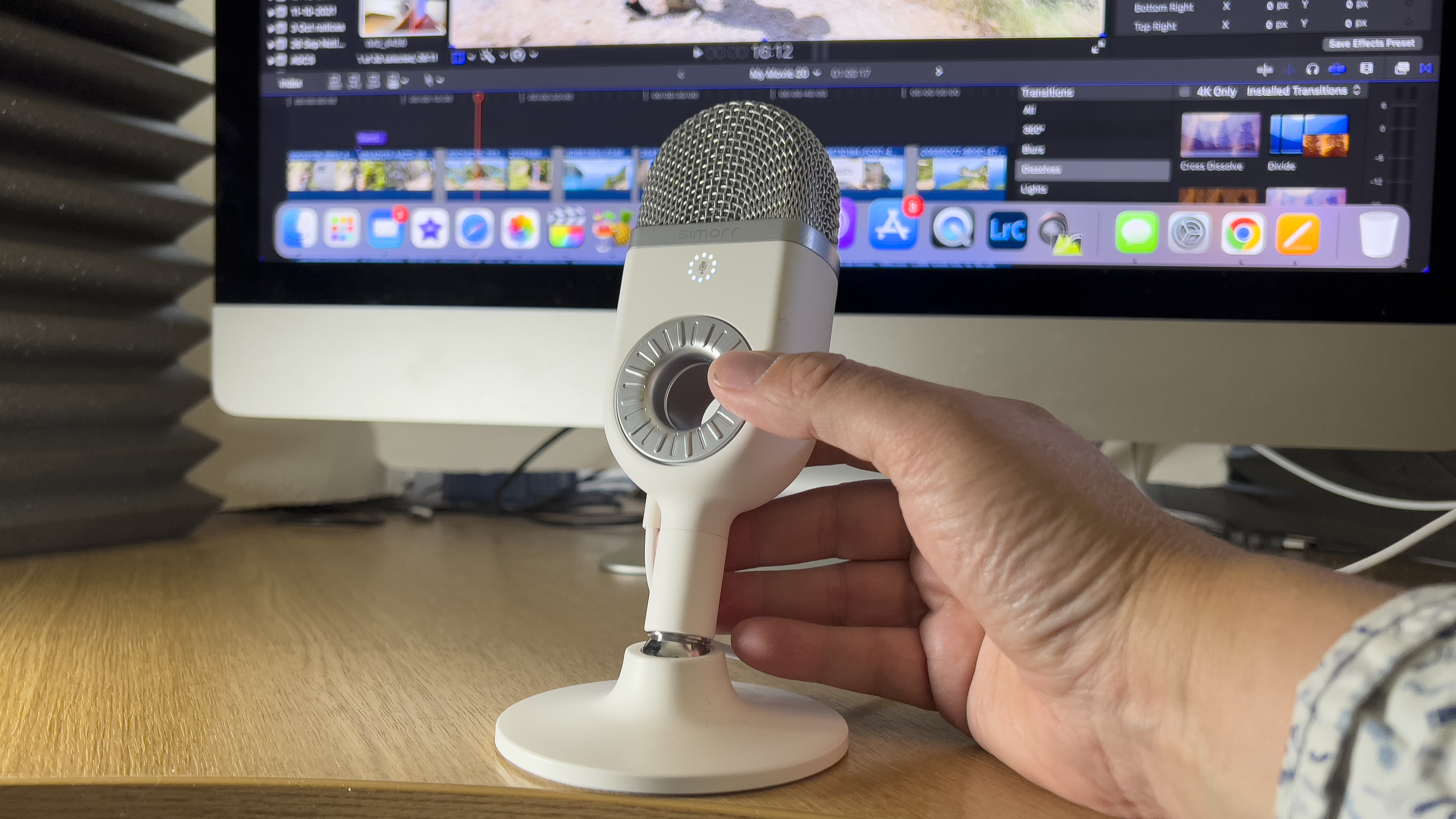
Specifications
Reasons to buy
Reasons to avoid
The simorr Wave U1 stands out in a crowded market due to the combination of its low price, small size and large sound. As such, it's a great budget choice. At around half the height of a Blue Yeti, it won't take up much space. And there's a touch sensitive Mute button, physical input dial for sound levels, and a headphone jack for monitoring sound quality.
Overall, that quality isn't the highest, but it's certainly better than your PC's built-in mic would be, and at this price, it's a good options for beginners who are just getting started in vlogging or film-making. For more details, see our simorr Wave U1 review.
Wireless lavalier microphones
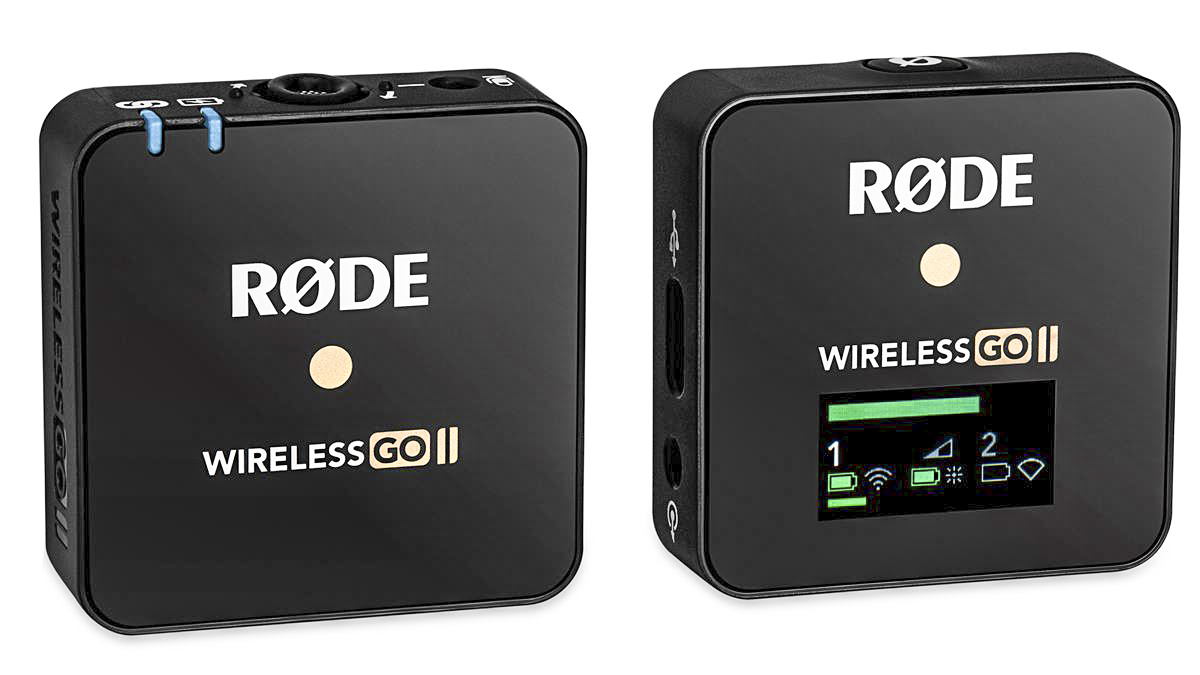
Specifications
Reasons to buy
Reasons to avoid
If you need to record sound from more than one person, the Rode Wireless GO II offers two transmitters, and a great range. It costs more than the simpler Rode Wireless GO (above), though, so there's a cost-benefit analysis to be made there.
For the extra money, you get a 200m by line of sight instead of 70m, two transmitters rather than one, and dual-channel recording that means you can capture two sides of a conversation.
You have the choice of recording audio from each of the transmitters to a separate channel, or ‘Merged’ mode, which combines them into a single output. Helpfully, the display on the receiver makes it obvious which mode is selected. For more details, see our Rode Wireless GO II review.

Specifications
Reasons to buy
Reasons to avoid
If you’re new to the wonderful world of wireless mics then we can highly recommend the Hollyland Lark M1 Duo Digital Wireless Microphone. There’s also a solo version available if you only need a transmitter instead two. Compared to similar mics this kit is reasonably priced and it even outperforms more expensive mics when it comes to broadcasting at a distance without losing the signal between the transmitter and the receiver.
The Lark M1 stands out from the wireless mic crowd thanks to its ability to transmit and receive crystal clear 16-bit audio for a long duration at a distance without latency or signal dropout. The effective HearClear noise-canceling feature means that you won’t need to spend time reducing unwanted background noise in a post-production app such as Premiere Pro.
Read our full Hollyland Lark M1 Duo review.
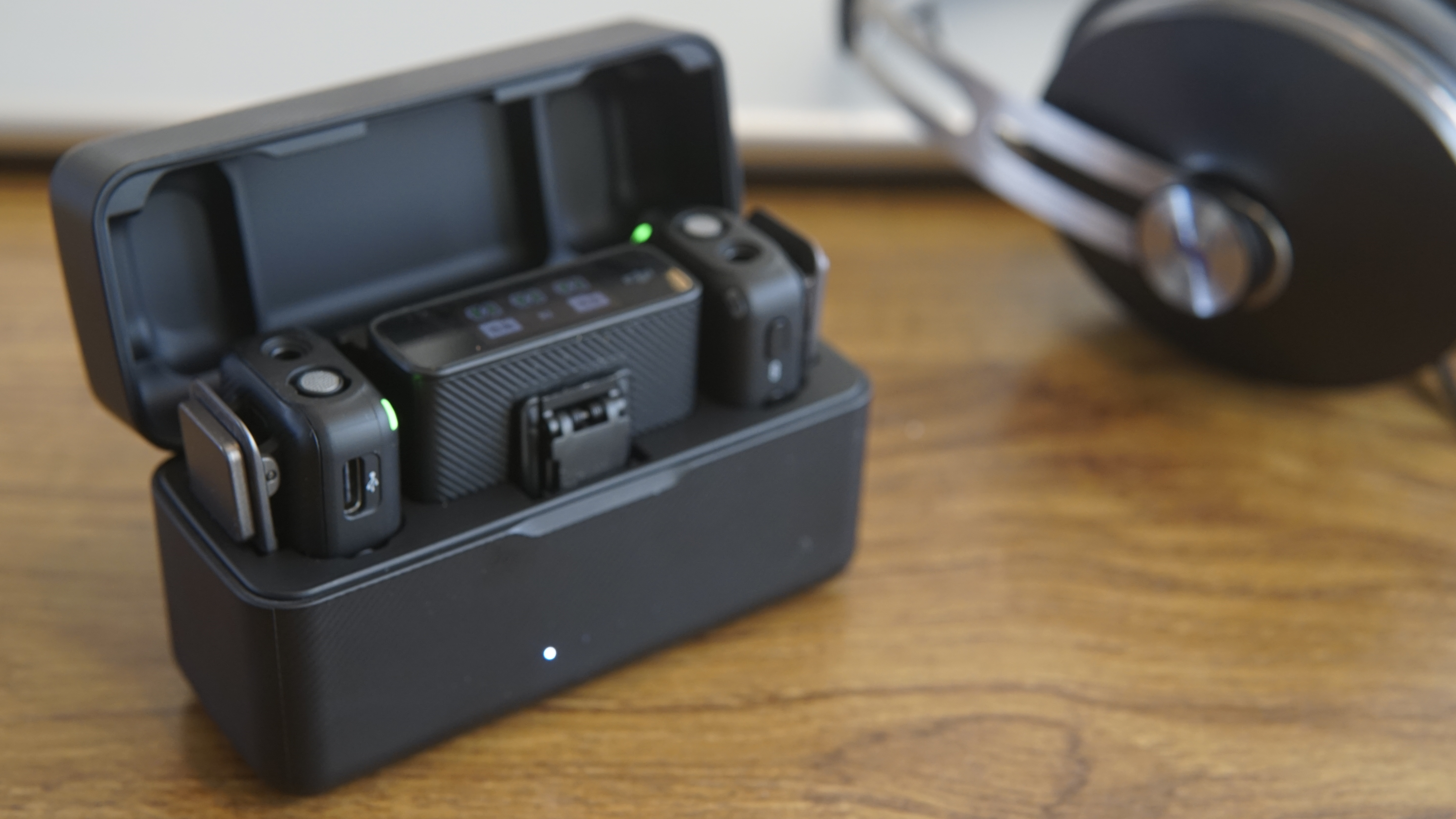
Specifications
Reasons to buy
Reasons to avoid
The DJI Mic is a really solid piece of kit. A wireless two-mic lavalier system, it features magnetic clips that make it easy to attach one of the transmitters to a person's clothing, or to an object. Audio quality is great, with a generous 250m transmission range, however the real selling point of the system is, surprisingly enough, its charging case.
It may not sound all that exciting, but having a simple and compact charging case that you can pop the transmitters and receiver into whenever you're not using them is such a useful feature. It radically extends the amount of time you can shoot with the mics, and the fact that the case re-pairs the transmitters with the receiver every time they're put in there is a handy time-saver. It's more expensive than Rode's Wireless Go (below), but if you don't mind the cost, the DJI Mic is well worth it. For more details, see our DJI Mic review.
Wired lavalier microphones
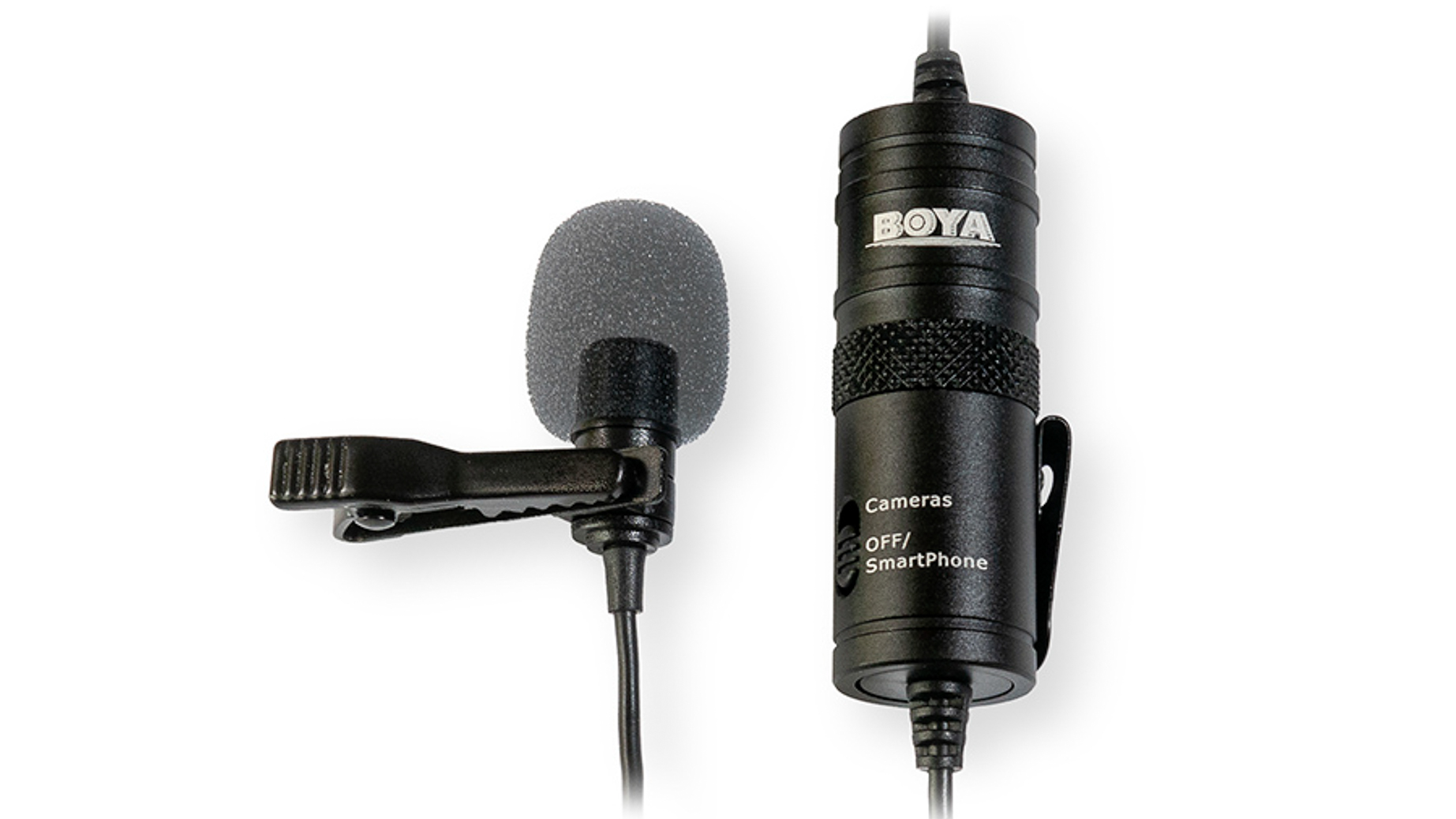

7. Boya BY-M1
Our expert review:
Specifications
Reasons to buy
Reasons to avoid
The Boya BY-M1 is a wired lavalier mic with a switchable power source. It runs on an LR44 button cell, and needs to be switched on if using a 'passive' source, or off if recording via a device with plug-in power.
It comes with a lapel clip, and includes a foam windscreen to help dampen wind noise and plosives. It offers an omnidirectional polar pattern, and the frequency response stretches from 65Hz to 18KHz.
While not as wide-ranging as some tie-clip mics here, this is still great for voice recording. The plastic construction of the capsule is a little bulkier than professional lavs, but the 6m lead is long enough to mic up your presenter and keep things tidy in the frame.
Considering the low price, the BY-M1 delivers audio quality way beyond expectations. It does have a hotter output than others here, and there's no attenuator to dip the volume, so it's possible it the signal could distort on some equipment.
But on our Canon EOS 5D Mk III, the result was an extremely low noise floor, giving excellent, hiss-free recordings. Although the build quality means it needs to be treated with care, this is an outstanding little mic.
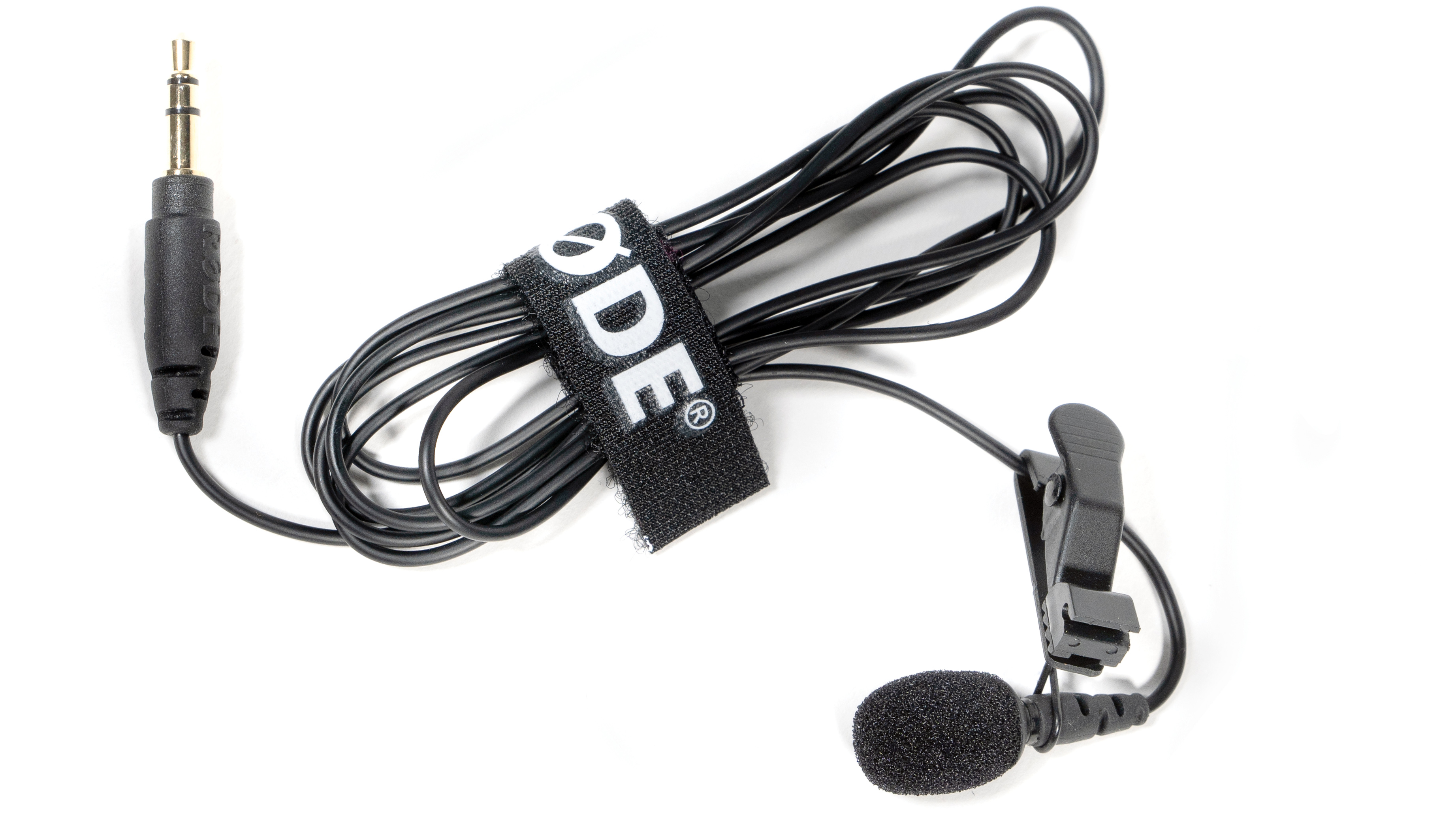
8. Rode Lavalier Go
Our expert review:
Specifications
Reasons to buy
Reasons to avoid
Although it’s designed to pair with the RØDE Wireless GO wireless microphone, the RØDE Lavalier GO is actually compatible with most cameras and recording devices, with a 3.5mm TRS mic input.
It’s a professional-grade lavalier mic with an omnidirectional condenser capsule and a Kevlar-reinforced cable. It comes supplied with a foam pop shield, a metal clip and a soft bag for storage.
The RØDE Lavalier GO delivers great sound when used with the Wireless GO or when connected directly to a camera. However, the pop shield doesn’t provide much protection from wind, and it’s advisable to purchase a windshield (such as the RØDE Minifur-Lav), if you plan to shoot outdoors regularly. That also lets you conceal the mic under clothing if you want it to be really discreet.
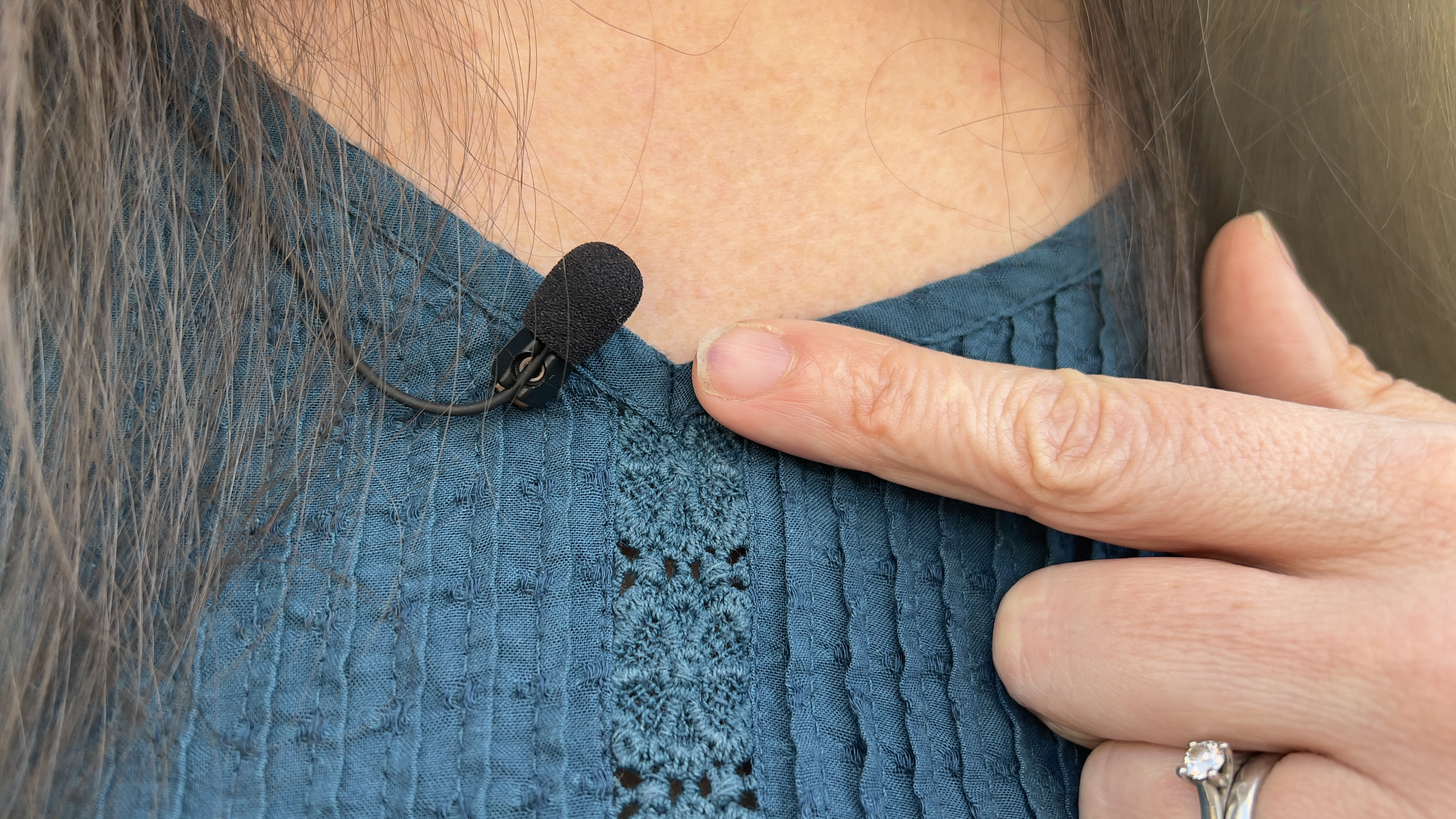
Specifications
Reasons to buy
Reasons to avoid
The wireless Wavo AIR’s bright red microphones (with their large, fluffy wind shields) are designed to draw attention on social media feeds, making them attractive to Vloggers and influencers. The Wavo Lav PRO lies at the other end of the film making spectrum. Due to its ultra small size it is much more discrete and can easily be hidden on an interviewee so that we can concentrate on what they’re saying rather than being distracted by flashy bits of on-screen audio kit.
The Joby Wavo Lav PRO lavalier mic enables you to capture cleaner, louder and more professional sounding audio on your digital camera, and it’s easy to conceal thanks to an ultra small capsule. The 2.5 meter cable enables you transport sound from an interviewee’s hard-wired mic straight to the camera, while giving you the distance to frame up a classic ‘talking head’ composition.
Read our full Joby Wavo Lav Pro review.
Shotgun microphones
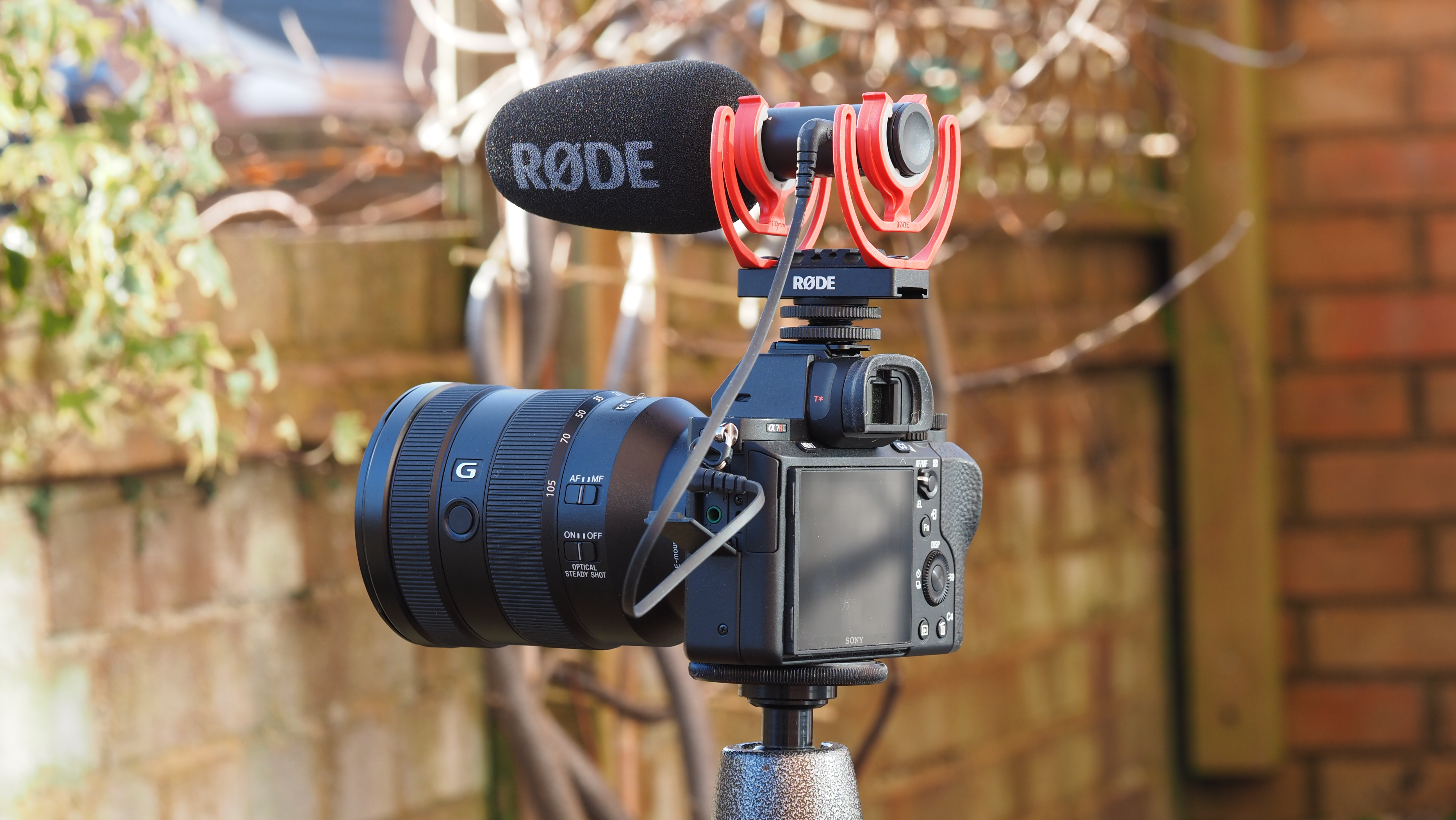

Specifications
Reasons to buy
Reasons to avoid
Rode make a vast range of video specific audio kit, from enthusiast-level all the way to high-end broadcast equipment. The VideoMic Go II is at the more affordable end of the spectrum and mounts onto a hotshoe, with an effective shockmount to reduce handling noise.
It's fuelled by plug-in power from the camera's mic socket, so doesn't need a battery, and there are no switches on board to attenuate the output or change polar patterns.
This means you just plug it in, set your recording level, and start shooting. It comes with a foam windscreen to reduce wind noise, but there's an optional "dead cat" WS12 windjammer for breezy conditions that costs another £20/$25. Frequency response stretches from 20Hz-20KHz, but recordings were rich and full, so we didn't find it lacking in bass. Overall this is a well made, good-sounding mic that's very easy to use. For more details, see our RØDE VideoMic GO II review.
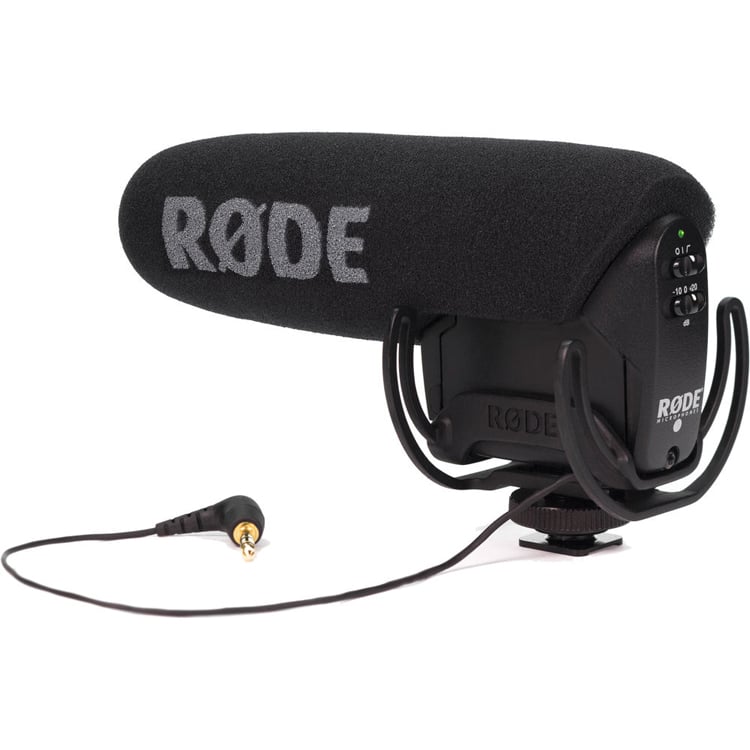

11. Rode VideoMic Pro
Our expert review:
Specifications
Reasons to buy
Reasons to avoid
A little bulkier and heavier than the Rode VideoMic Go is Rode's VideoMic Pro. This hotshoe shotgun mic shares a similar size and design, but adds extra features for those seeking more flexibility and higher quality recordings. Although it's suspended on a similar shockmount as the Go, it incorporates a chamber for a 9V battery (not supplied), which serves as the power source for around 70 hours.
On the back, there are two switches to tailor performance, and these alter the output gain (-10, 0 or +20 dB) or offer the choice between a flat response or one with a low frequency cut. The sound quality is excellent, with rich tonality throughout the 40Hz-20KHz range and a flat response all the way through the speech frequencies. Impressively, there's a very low noise floor that's comparable to the Boya BY-M1 lav mic, so only the hypercritical will be concerned about the trace of mic-generated hiss that's present.
The supplied foam windscreen serves to protect the mic, but outdoors, a furry windjammer is needed to prevent wind noise, and the dedicated Rode model costs another £30/$38.
This aside, The VideoMic Pro is an excellent mic, and more than justifies its price with its features and performance.
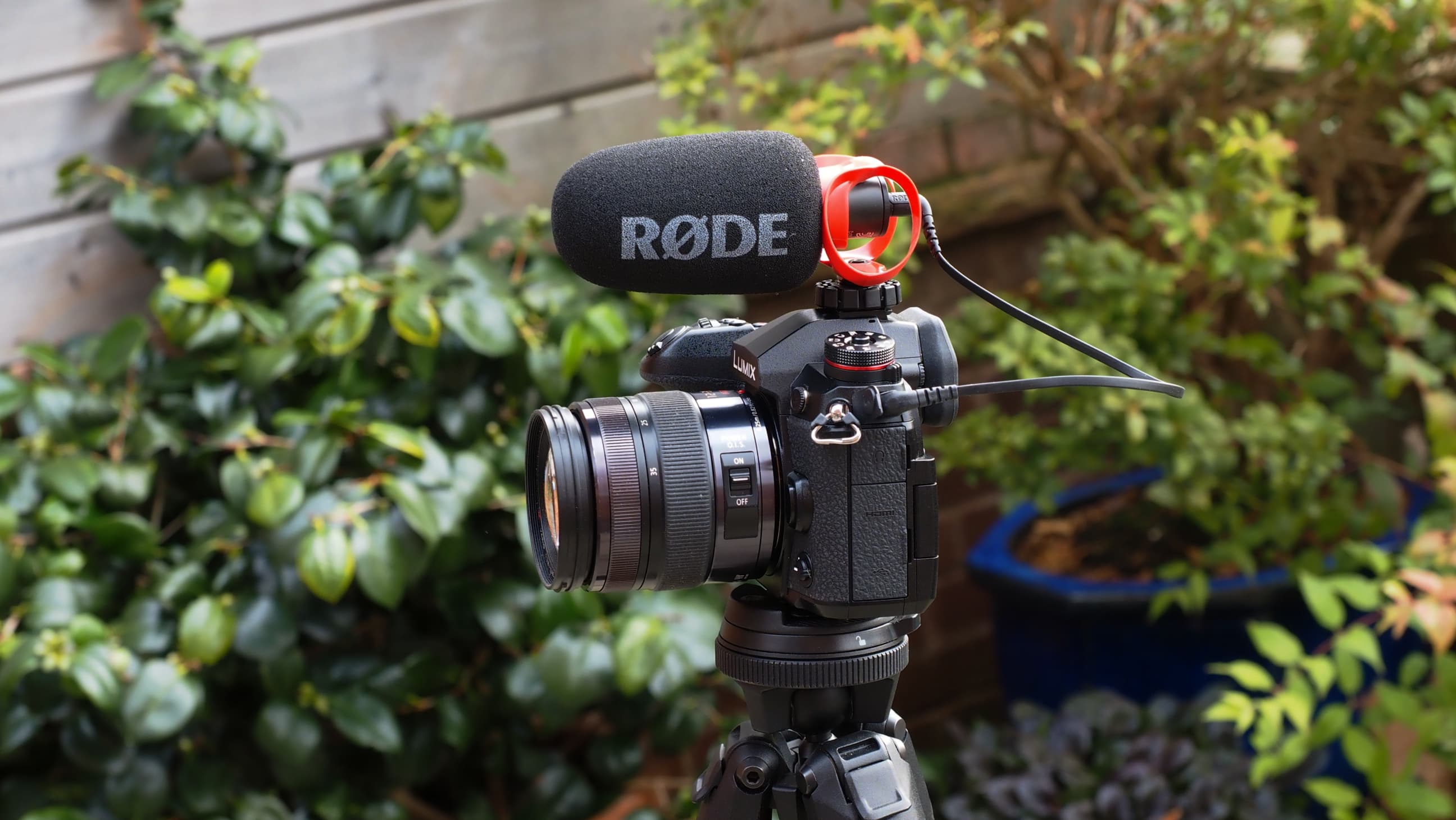
Specifications
Reasons to buy
Reasons to avoid
Looking for an on-camera shotgun mic that's as small, compact and light as possible? The VideoMicro II is the tiniest in the RODE line-up and its price, size and simplicity make ideal for video and vlogging beginners, as well as those who need a small spare in the kitbag for emergency backup.
You don’t need a battery, and the mic comes with a new ‘Helix’ isolation mount to suppress any vibration from the camera. It's nice and easy to use, and despite its low weight and price, still delivers professional quality audio. Plus you get both furry and foam windshields and two patch cables. For more details, see our RODE VideoMicro II review.
Microphone jargon explained
Microphones have their own jargon. Here's a glossary of mic terms to explain what they all mean, what you need to know and how to use this to choose the best microphone.
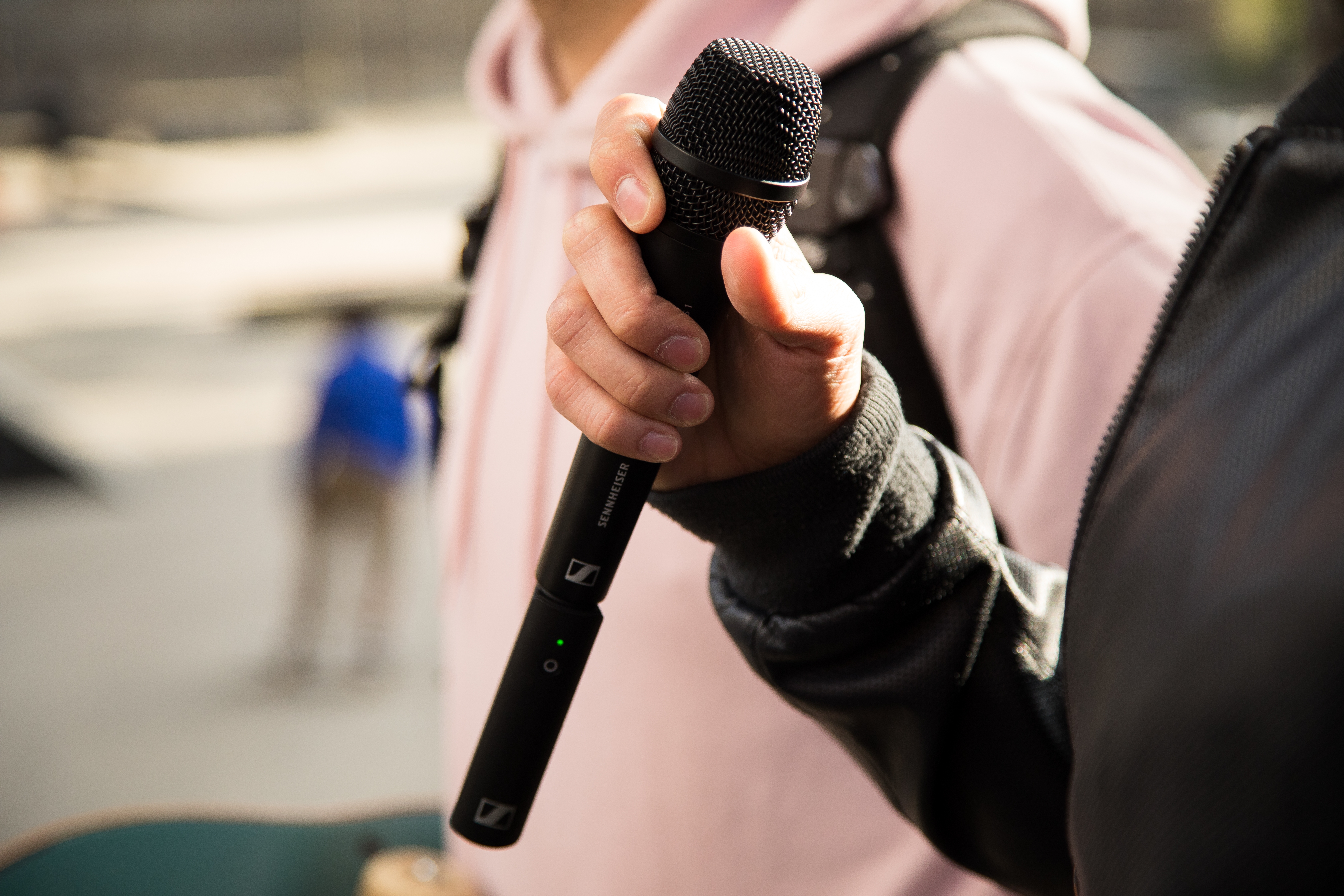
An external microphone is an essential purchase if you're serious about getting quality sound recordings on your videos, but which type should you choose? To help you become more au fait with the world of sound recording, here's the lowdown on the audio jargon you can't avoid running into...
What is a polar pattern?
The direction from which a mic can pick up sound cleanly is known as its polar pattern, and this varies according to its design and intended use. In many ways, a mic's polar pattern is a bit like the audio equivalent of a lens's focal length, as it tells you how wide or narrow the pickup angle will be.
What is an omnidirectional mic?
Omnidirectional mics pick up sound from all around the capsule, and this polar pattern is popular on lavalier mics clipped to a presenter's clothing, as the wearer is likely to look up and down and turn their head from side to side while speaking. With omni lavs, it's also common to mount them upside down. This shields the capsule's top from plosives and nasal exhales, with only a small decline in high frequency response and sound level.
What is a cardioid mic?
Cardioid (heart-shaped) polar patterns are common on many types of mics. These pick up sound from the front and sides of the mic, and it falls off at the rear. Cardioid patterns are usually seen on handheld vocal and instrument mics, where the lack of rear response makes them less susceptible to feedback.
What is a supercardioid mic?
Supercardioid polar patterns offer a narrower pickup zone than regular cardioids, so they reject sound coming in from the sides much more. They are more sensitive to sounds from the rear than a cardioid though, so you need silence behind the mic when using them.
What is a hypercardioid mic?
Hypercardioid mics reject even more side-on sounds and are more focused on sounds directly in front. As they're very directional, and have a barrel shape, they're often called 'shotgun' mics, but they're also sensitive to sounds from the rear, so as with a supercardioid, you need to ensure all is quiet behind the mic to get a clean recording of the source you're targetting.
What is a bicardioid mic?
The figure-of-eight or bidirectional mic is the last popular polar pattern. This picks up sounds equally well from the front and rear, but strongly rejects anything coming in from either side. In essence, a figure-of-eight is used like a double-headed mic, so two sources 180 degrees apart can be cleanly recorded.
What is frequency response?
Sound waves are carried through the air, and are measured in cycles per second (also known as Hertz). This is essentially how many times the wave vibrates air molecules in a second to produce a 'note'. Soundwaves stretch from very low frequencies (think of a very low tone) to high frequencies (a very high, shrill note) and someone young with perfect ears may hear from as low as 20 cycles per second (20Hz) to a very high 20,000 cycles (20KHz).
This 20Hz-20KHz is the maximum frequency range of human hearing, though falloff occurs - especially at the upper limit - with age. By the time we pass 25, we're unlikely to hear beyond 15KHz, and this drops down to about 12KHz at 50 years.
To get natural-sounding audio, a mic needs to capture the frequencies we hear, and its frequency response reveals the lowest and highest-pitched sounds it is capable of recording. Professional mics often also have a frequency response chart, so the user can see how the mic may 'colour' the sound with an increase or reduction in sensitivity at particular frequency groups. If the frequency response is relatively flat across the range of human speech (about 100Hz to 8KHz), then the mic will produce a natural-sounding recording.
What are Phantom Power and Plug-in Power?
Unlike 'passive' dynamic mics, condenser mics require power to run, and mixing desks, field recorders and video cameras in the pro sector offer XLR mic inputs with switchable phantom power. This is sent down the mic lead to fuel the mic's electronics, so no additional power supplies are needed.
Enthusiast condenser mics also need power, but either take a battery or use a different standard with a low voltage, called Plug-in Power (PiP). This is sent through the mic lead from the device via its 3.5mm jack socket. Many audio recorders, camcorders and DSLRs offer this, so you can use PiP mics, but check your camera's manual. If your DSLR only offers a passive (unpowered) 3.5mm jack socket for external mics, you'll need a mic that offers its own power source in the form of a battery.
What is a shotgun mic?
A shotgun microphone is a 'barrel' shaped mic with a hypercardioid pickup pattern that's used extensively in film and TV production to isolate the sound coming from a specific direction. Shotguns may be mounted on the camera, so they target the sound that the lens is pointing at, or attached to a telescopic boom pole. The boom allows them to be placed as close to the source as possible, while keeping the mic itself just out of frame. The mic is suspended on a shock-absorbing mount, so the boom can be moved and the mic directed at the sound source without creating any handling noise.
What is a lavalier mic?
A lavalier microphone is a very small condenser mic that can be clipped to a lapel to remain in close proximity to the mouth of the speaker. It is also often called a tie-clip mic. Because they are visually unobtrusive and give great audio quality, lavs are now the default choice for TV presenters and interview subjects. A subset of the lav is the headworn mic, which is either hidden in the performer's hair or on a small boom that's clipped around the ears. This ensures the mic stays close to the mouth even if the head is turned.
What is a large diaphragm condenser microphone?
A large diaphragm condenser is the most common mic for studio voice recordings, such as voice-over for programmes or vocals for music. Because it's a powered condenser mic, it's able to record crisp, high frequencies much better than unpowered dynamic mics, and the large diaphragm within the capsule does a wonderful job of recording voices really cleanly. Although budget studio condensers are available, and are often sold as 'podcast' mics that plug in to a computer via USB, top pro-quality models are very expensive, costing several thousand pounds.
What is a handheld mic?
A handheld microphone is a medium-sized mic designed to be held by the performer or clipped to a stand. They're mainly used for work like speeches and live vocals over a PA system, but examples like Shure's SM58 is sometimes seen on screen as a general purpose interview mic or used as a general purpose post-production tool for voice-overs.
Handheld mics are normally very robust, dynamic mics, so they'll withstand loads of abuse and require no independent power source for them to work.
What is a boundary microphone?
A boundary micrphone is an omnidirectional condenser mic that can be placed on a surface like a table. Sometimes called a plate mic owing to its flat shape, they're often used to record meetings or conferences, where speech could be coming from any direction. In a studio, they may be used to capture the live sound of the room.
What is a parabolic microphone?
A parabolic mic is a highly directional mic that works like a satellite dish to focus the sound waves onto a central point, where the mic is situated. They're sometimes used to isolate distant sounds in wildlife recording, but low frequency response is very poor on portable dishes, so they are more common in surveillance use.
Get the Digital Camera World Newsletter
The best camera deals, reviews, product advice, and unmissable photography news, direct to your inbox!
Jon spent years at IPC Media writing features, news, reviews and other photography content for publications such as Amateur Photographer and What Digital Camera in both print and digital form. With his additional experience for outlets like Photomonitor, this makes Jon one of our go-to specialists when it comes to all aspects of photography, from cameras and action cameras to lenses and memory cards, flash diffusers and triggers, batteries and memory cards, selfie sticks and gimbals, and much more besides.
An NCTJ-qualified journalist, he has also contributed to Shortlist, The Skinny, ThreeWeeks Edinburgh, The Guardian, Trusted Reviews, CreativeBLOQ, and probably quite a few others I’ve forgotten.

